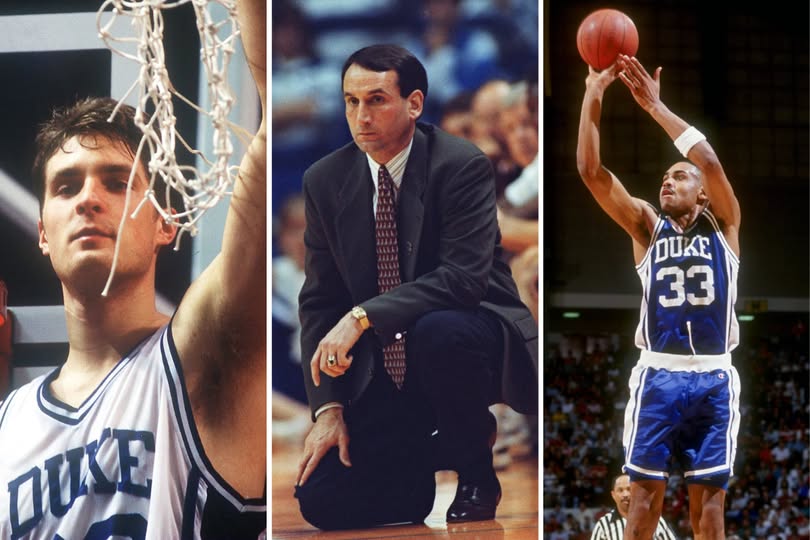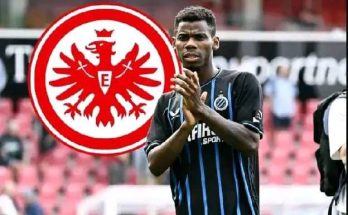From the thunderous cheers that rattle the rafters of Cameron Indoor Stadium to the heart-stopping silence before a clutch shot falls through the net, there’s a place in college basketball where legends are not just born — they are forged. Duke University, draped in royal blue and steeped in tradition, has long stood as one of the sport’s most iconic institutions. The phrase “Legends wear Duke in blue” is more than a statement of pride; it is a recognition of the greatness cultivated under the watchful eyes of banners, history, and relentless competition. Through clutch buzzer-beaters, iconic three-pointers, and the brilliance of transcendent athletes, Duke has helped shape the narrative of college basketball excellence.
Basketball at Duke is not merely a game — it’s an institution, a proving ground, and for many, the beginning of greatness. This legacy is not built on a single season or a fleeting moment of glory. It is layered through decades of dramatic victories, heartbreaking defeats, and an unwavering commitment to excellence. At the center of it all lies Cameron Indoor Stadium, one of the most hallowed arenas in the sport. Built in 1940, it remains a cathedral of college basketball, intimate and thunderous, with every seat seemingly within whispering distance of the court. The passion of the Cameron Crazies, the student section known for its manic energy and elaborate chants, creates an atmosphere unmatched in college athletics. This is where Duke legends are born and where their unforgettable moments unfold.
Think of Christian Laettner, whose name alone evokes an avalanche of emotion in fans across the nation. On March 28, 1992, in what remains one of the most iconic plays in basketball history, Laettner caught a full-court pass from Grant Hill, turned, dribbled, and hit a buzzer-beater against Kentucky in the Elite Eight — a shot that secured Duke’s place in the Final Four and has echoed ever since. The shot, flawless in execution, became more than just a winning play; it became a cultural touchstone, a symbol of Duke’s resilience and flair for the dramatic. That one moment, frozen in time, serves as a beacon of what Duke basketball represents — preparation meeting poise under pressure.
Duke has never shied from the spotlight. In fact, it often demands it. Under the leadership of Coach Mike Krzyzewski — known simply and reverently as Coach K — the program evolved into a dynasty. Over four decades, Coach K cultivated talent, molded future NBA stars, and won with class and consistency. From his first title in 1991 to his final Final Four appearance in 2022, Coach K was the heartbeat of Duke basketball, instilling in his players a fierce competitive spirit and a commitment to team-first principles. The success wasn’t just in championships or NBA draft picks; it was in the brotherhood he built, a lasting culture where alumni remain connected, bonded by the shared experience of wearing Duke blue.
Legends like Grant Hill, Shane Battier, and J.J. Redick didn’t just leave their mark in box scores. They became symbols of a Duke ethos: tough, intelligent, and relentlessly driven. Redick, for example, with his deadeye accuracy and fearless shooting, became one of the most hated and revered players in college basketball — a player who thrived under pressure and relished silencing hostile crowds. His ability to hit three-pointers from almost anywhere on the court, often with a defender draped over him, became a hallmark of Duke’s offensive firepower. Every time Redick rose up for a shot, you could feel the air in the arena pause. When the net swished, Cameron exploded.
These moments are not just highlights; they are part of the mythos. They are stitched into the very fabric of Duke basketball. The court itself, dedicated to Coach K, stands as a testament to the countless triumphs engineered there. With every game, new memories are made — from Tre Jones’s heroic comeback against North Carolina in 2020, capped by a buzzer-beating putback in overtime, to Zion Williamson’s jaw-dropping dunks and shot-blocking theatrics that electrified the nation during the 2018–2019 season. Zion was not just a player — he was a spectacle, a phenomenon whose physical dominance and infectious energy galvanized Duke fans and struck fear into opponents.
But Duke’s identity isn’t just shaped by superstars. Role players, walk-ons, and unsung heroes all have a place in the story. Players like Steve Wojciechowski, who embodied grit and heart, diving for loose balls and hounding opposing guards, or Quinn Cook, whose leadership guided the 2015 team to a national title — they all reinforce the idea that wearing Duke blue means playing for something bigger than oneself. It means embracing the weight of expectations and thriving in the cauldron of competition.
The rivalry with North Carolina, arguably the greatest in sports, has also been instrumental in defining the Duke legend. The ferocity of those games — often separated by a few miles and a few inches on the scoreboard — creates moments of unparalleled intensity. Every possession feels monumental, every shot magnified. The 2001 miracle minute, the 2015 overtime thriller, the 2022 Final Four showdown — these games are more than wins and losses. They’re history, written live, under the brightest lights. When Duke wins in Chapel Hill or sends the Tar Heels home heartbroken, the victory reverberates far beyond the court. It becomes part of the rivalry’s eternal flame.
For many young athletes, wearing Duke blue is the dream. But it comes with a burden: a legacy to uphold. Yet time and time again, these athletes rise to meet the challenge. The one-and-done era has seen its fair share of Duke players like Kyrie Irving, Brandon Ingram, Jayson Tatum, and Paolo Banchero leave after one season, but each has carried the torch proudly, contributing unforgettable performances and continuing the tradition of excellence. Their time may be brief, but the impact is lasting. Tatum’s smooth scoring touch, Irving’s dazzling handle, Banchero’s poise and power — all have left imprints on the hallowed hardwood of Cameron.
Beyond the court, the culture of Duke basketball promotes education, integrity, and brotherhood. Players are held to high standards both athletically and academically. Many return to complete their degrees, while others use their platforms to advocate for causes they believe in. The “Duke Brotherhood” is not just a marketing term; it’s a real and living network of players who support one another throughout their lives, long after the final whistle of their college careers. This unity, fostered through shared struggle and mutual respect, continues to define the program.
In a sport often driven by hype and short-term glory, Duke’s legacy is built on endurance. Decades of sustained excellence have earned the program not just accolades but reverence. Opposing fans may boo, but deep down, they respect what Duke represents. Excellence. Resilience. Legacy. Whether it’s a thunderous alley-oop, a dagger three-pointer at the horn, or the quiet leadership of a floor general, the players who wear Duke blue carry the torch of those who came before them — and light the way for those who will come next.
The echoes of legendary moments still bounce off the walls of Cameron Indoor. Bobby Hurley’s dazzling drives. Jason Williams’ clutch heroics. Tyus Jones calmly sinking free throws in a championship game. Kyle Singler battling through fatigue and pain for one more rebound. Nolan Smith exploding in transition. They are all chapters in an epic still being written. Every new recruit who walks through the locker room doors sees the photos, the trophies, and the expectations. It’s a reminder that to wear Duke in blue is to step into greatness.
So when the lights shine bright and the pressure mounts, there is a calm confidence that comes with being a part of Duke. Because history shows that in these moments — when time ticks down and everything is on the line — Duke players find a way. They rise, they shoot, they defend, and they deliver. They hit the buzzer-beaters. They sink the iconic threes. And in doing so, they remind the world that legends don’t just play for Duke.



